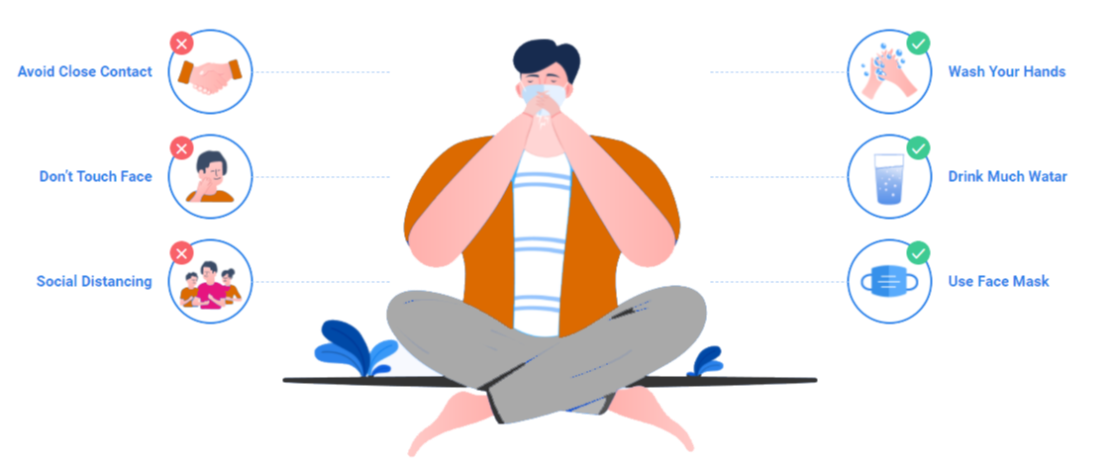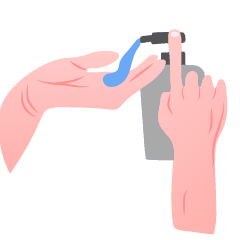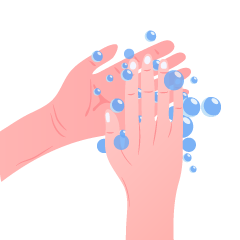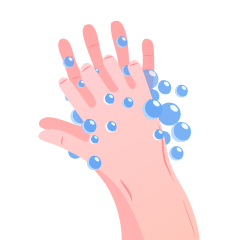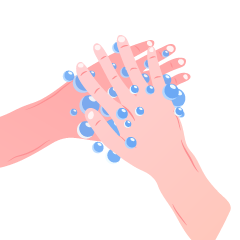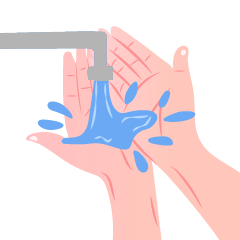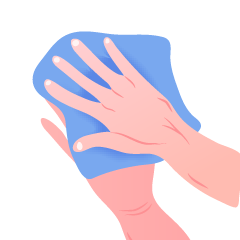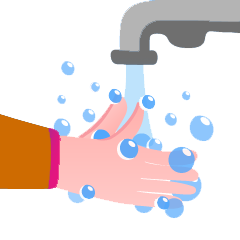
Wash your hands frequently
Regularly and thoroughly clean your hands with an alcohol-based hand rub or wash them with soap and water for at least 20 seconds.
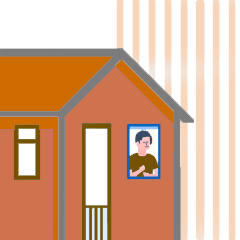
Maintain social distancing
Maintain at least 1 metre (3 feet) distance between yourself & anyone who is coughing or sneezing. If you are too close, get chance to infected.

Avoid touching face
Hands touch many surfaces and can pick up viruses. So, hands can transfer the virus to your eyes, nose or mouth and can make you sick.
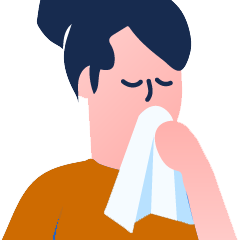
Practice respiratory hygiene
Maintain good respiratory hygiene as covering your mouth & nose with your bent elbow or tissue when cough or sneeze.



